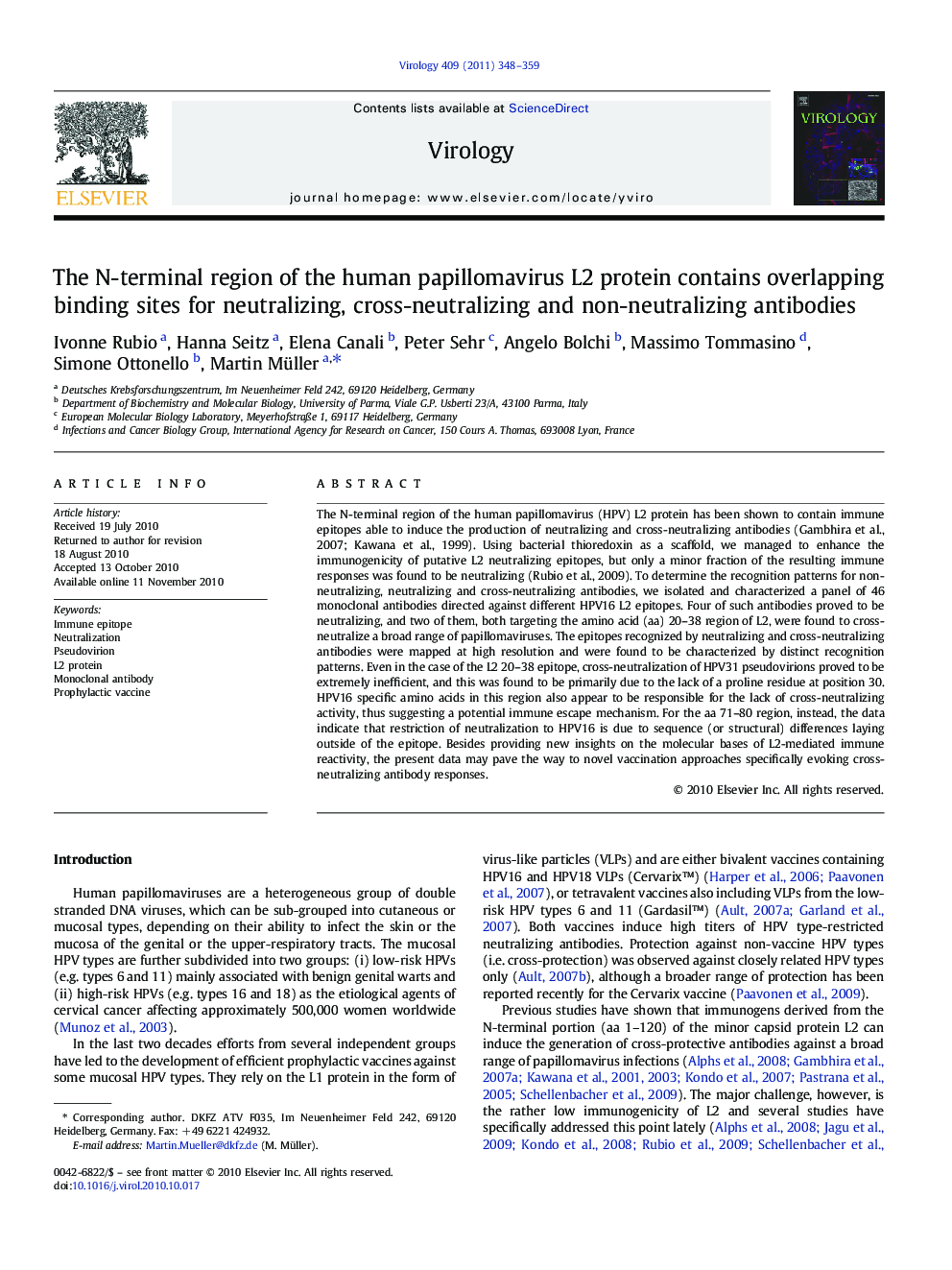| Article ID | Journal | Published Year | Pages | File Type |
|---|---|---|---|---|
| 3425185 | Virology | 2011 | 12 Pages |
The N-terminal region of the human papillomavirus (HPV) L2 protein has been shown to contain immune epitopes able to induce the production of neutralizing and cross-neutralizing antibodies (Gambhira et al., 2007; Kawana et al., 1999). Using bacterial thioredoxin as a scaffold, we managed to enhance the immunogenicity of putative L2 neutralizing epitopes, but only a minor fraction of the resulting immune responses was found to be neutralizing (Rubio et al., 2009). To determine the recognition patterns for non-neutralizing, neutralizing and cross-neutralizing antibodies, we isolated and characterized a panel of 46 monoclonal antibodies directed against different HPV16 L2 epitopes. Four of such antibodies proved to be neutralizing, and two of them, both targeting the amino acid (aa) 20–38 region of L2, were found to cross-neutralize a broad range of papillomaviruses. The epitopes recognized by neutralizing and cross-neutralizing antibodies were mapped at high resolution and were found to be characterized by distinct recognition patterns. Even in the case of the L2 20–38 epitope, cross-neutralization of HPV31 pseudovirions proved to be extremely inefficient, and this was found to be primarily due to the lack of a proline residue at position 30. HPV16 specific amino acids in this region also appear to be responsible for the lack of cross-neutralizing activity, thus suggesting a potential immune escape mechanism. For the aa 71–80 region, instead, the data indicate that restriction of neutralization to HPV16 is due to sequence (or structural) differences laying outside of the epitope. Besides providing new insights on the molecular bases of L2-mediated immune reactivity, the present data may pave the way to novel vaccination approaches specifically evoking cross-neutralizing antibody responses.
